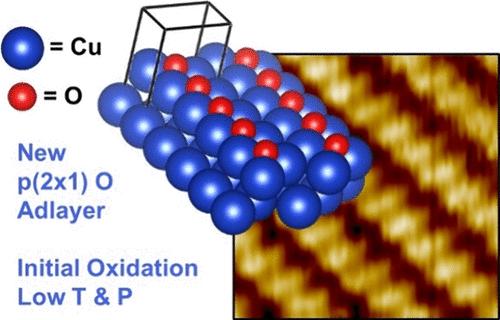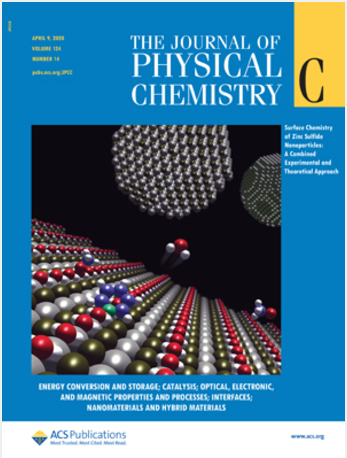阐明铜(111)上可迁移的 p(2 × 1) O 原子层结构
IF 3.3
3区 化学
Q2 CHEMISTRY, PHYSICAL
引用次数: 0
摘要
铜基催化剂在包括甲醇合成在内的许多工业反应中无处不在。在部分氧化条件下,铜催化剂可能具有动态表面结构,从而极大地影响其反应活性。因此,阐明铜的表面结构并寻找可转移的结构,有助于实现了解和控制其催化行为的长期目标。薄膜铜氧化物(如 "29 "和 "44 "结构)在文献中已有详细描述,但这些薄膜氧化物的前体只有在特定条件下才会存在,因此研究起来具有挑战性。我们结合使用了实验和计算表面科学技术,在具有 p(2 × 1) 单元的铜(111)上发现了以前未曾报道过的 O 原子叠层结构,并对其进行了建模和量化。我们使用扫描隧道显微镜来观察条纹状 2 × 1 结构,并通过密度泛函理论 (DFT) 结构优化来确定铜原子和 O 原子在 p(2 × 1) 单胞中热力学上最有利的位置。利用 X 射线光电子能谱和温度编程解吸法,我们确定了该结构中表面铜原子与 O 原子的配位比为 2:1,与 DFT 模拟的配位比相同。这项研究报告了一种在 Cu(111) 氧化的最初阶段形成的新的可转移结构,因此值得在 Cu 表面催化相关氧化还原过程的模型中加以考虑。本文章由计算机程序翻译,如有差异,请以英文原文为准。

Elucidation of a Metastable p(2 × 1) O Atom Adlayer Structure on Cu(111)
Cu-based catalysts are ubiquitous in many industrial reactions, including methanol synthesis. Under partially oxidizing conditions, Cu catalysts can have dynamic surface structures that greatly influence their reactivities. Therefore, elucidating the surface structures that are present on Cu, and looking for metastable structures, aids in the long term goal of understanding and controlling their catalytic behavior. Thin-film copper oxides such as the “29” and “44” structures have been described at length in the literature, but precursors to these thin-film oxides can be challenging to study because they exist only under certain conditions. Using a combination of experimental and computational surface science techniques, we discovered, modeled, and quantified a previously unreported O atom adlayer structure on Cu(111) with a p(2 × 1) unit cell. We used scanning tunneling microscopy to visualize the striped 2 × 1 structure and density functional theory (DFT) structure optimizations to identify the thermodynamically most favorable positions of Cu and O atoms in a p(2 × 1) unit cell. Using X-ray photoelectron spectroscopy and temperature-programmed desorption, we determined the stoichiometry of the structure to be 2:1 for surface Cu atoms to O adatoms, the same stoichiometry as that modeled by DFT. This work reports a new metastable structure formed on Cu(111) at the very initial stages of oxidation and is therefore worth considering in models of catalytically relevant redox processes at Cu surfaces.
求助全文
通过发布文献求助,成功后即可免费获取论文全文。
去求助
来源期刊

The Journal of Physical Chemistry C
化学-材料科学:综合
CiteScore
6.50
自引率
8.10%
发文量
2047
审稿时长
1.8 months
期刊介绍:
The Journal of Physical Chemistry A/B/C is devoted to reporting new and original experimental and theoretical basic research of interest to physical chemists, biophysical chemists, and chemical physicists.
 求助内容:
求助内容: 应助结果提醒方式:
应助结果提醒方式:


